本文由100architects授权mooool发表,欢迎转发,禁止以mooool编辑版本转载。
Thanks 100architects for authorizing the publication of the project on mooool, Text description provided by 100architects.
100architects : “电话亭”项目是MINI China通过其“Urban Matters”(城市事务)平台对公共空间进行干预的一项措施,“Urban Matters”平台策划并提出了解决中国创意阶层面临的城市挑战的设计方案。
100architects : The Phone Booths is a public space intervention powered by MINI China through its platform Urban Matters, which curates and creates design solutions that tackle urban challenges confronting China’s creative class.
MINI China与长宁区政府和Anomaly & Assbook合作,委托100architects(佰筑)改造设计位于上海历史悠久的愚园路上的废弃电话亭。设计的主要目的是探索改造城市旧文物的可能性,使这些旧文物像过去一样具有与社会相关联的公共用途。
MINI China, in collaboration with Changning District Government, Anomaly & Assbook, commissioned us the design and production for revamping old phone booths in Yuyuan Road, a very historic road of Shanghai. The main objective was to explore the possibilities of revamping such old relics to become of relevant public use in this contemporary time, as they already were in a past time.
▼视频 Video
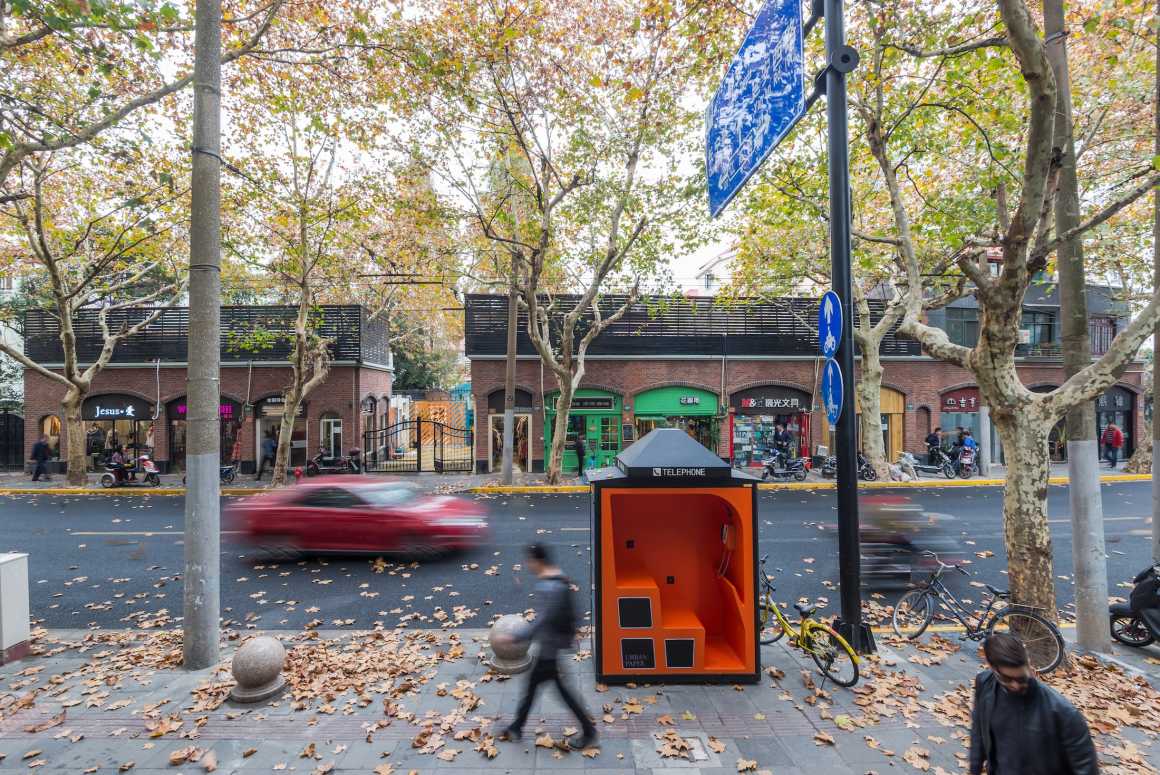
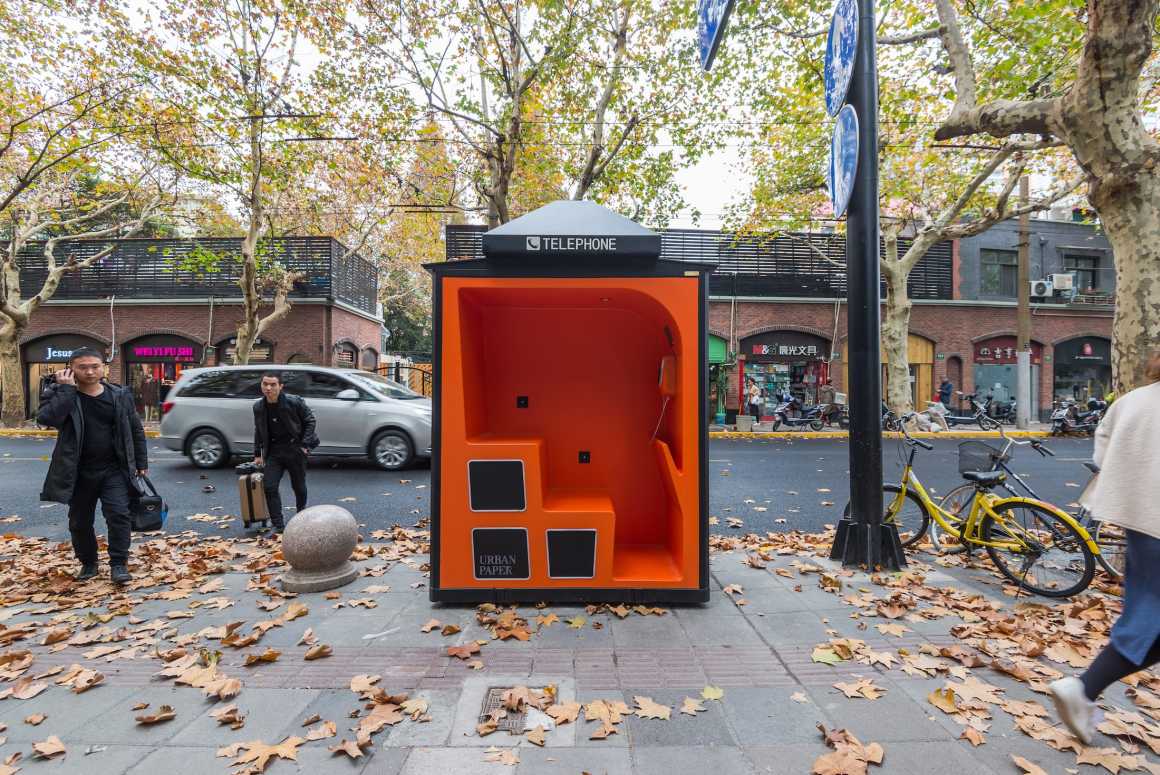
世界上主要城市的大多数街道上都设有公用电话亭,公用电话亭网络对城市的运营来说至关重要,然而几十年来,电话亭在世界范围内已经过时了。在很多地方,它们甚至变成了城市垃圾桶,还有更糟糕的是成为了公共厕所。在这个智能手机时代,废弃的公用电话亭如何植入其他的公共用途?在当今社会的公共领域,除了打电话之外,还有什么其他的功能是与社会相关的?这些想法激励了世界各地许多有创造力的人去寻找解决方案,将这些城市遗产变成对当今社会和生活更有用的东西。
Every major city in the world has a network of public phone booths on most streets, which was crucial to the running of the city, however a couple of decades phonebooths throughout the world became obsolete. In a lot of places, they had even become urban trash bins or even worst, public toilets. How could old public phone booths serve to other public purposes in this era of smartphones? What other functions, rather than making a call, are relevant in the current contemporary public realm? These thoughts have motivated many creative people around the world to look for solutions to turn those urban relics into something more useful to the current society and its lifestyle.
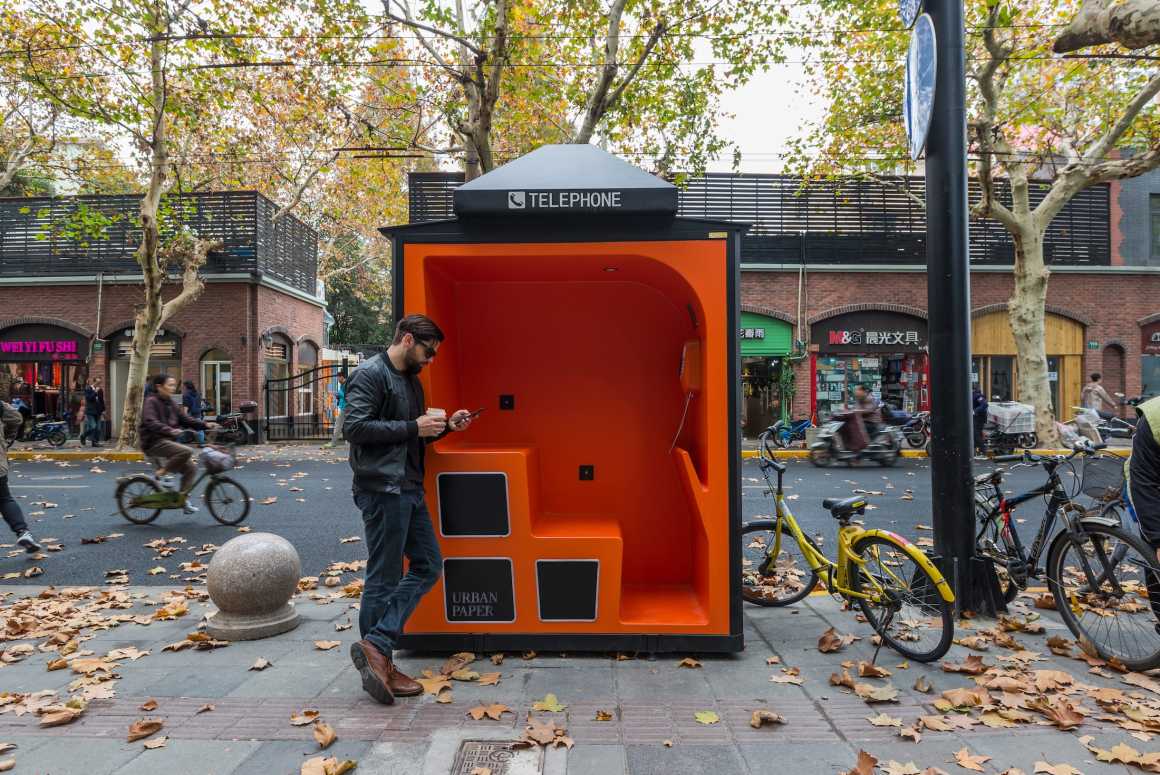
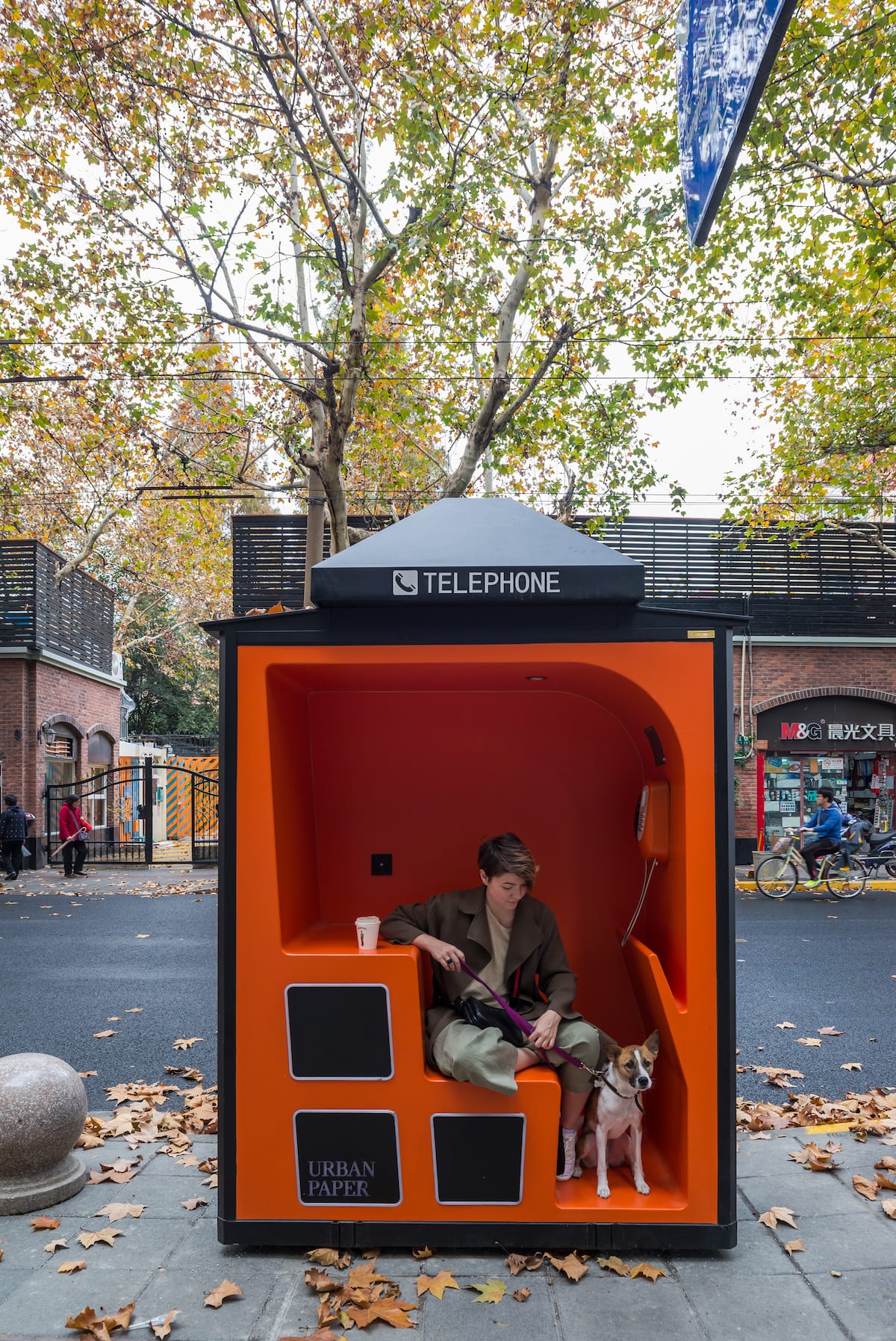
设计师重新思考这些城市物体在当代城市中的作用,考虑到潜在用户的当前需求和状况,并对空间位置进行分析后,设计师心里有了清晰的解决方案——把这些废弃电话亭变成城市的迷你胶囊,方便人与人之间的互动。
We were hired to rethink the role of those urban objects in our contemporary city with the current needs and conditions of the real potential users of today. after analyzing the booths, the answer was clear. We had to turn them into urban mini capsules that facilitate interaction among people.
©Amey Kandalgaonkar
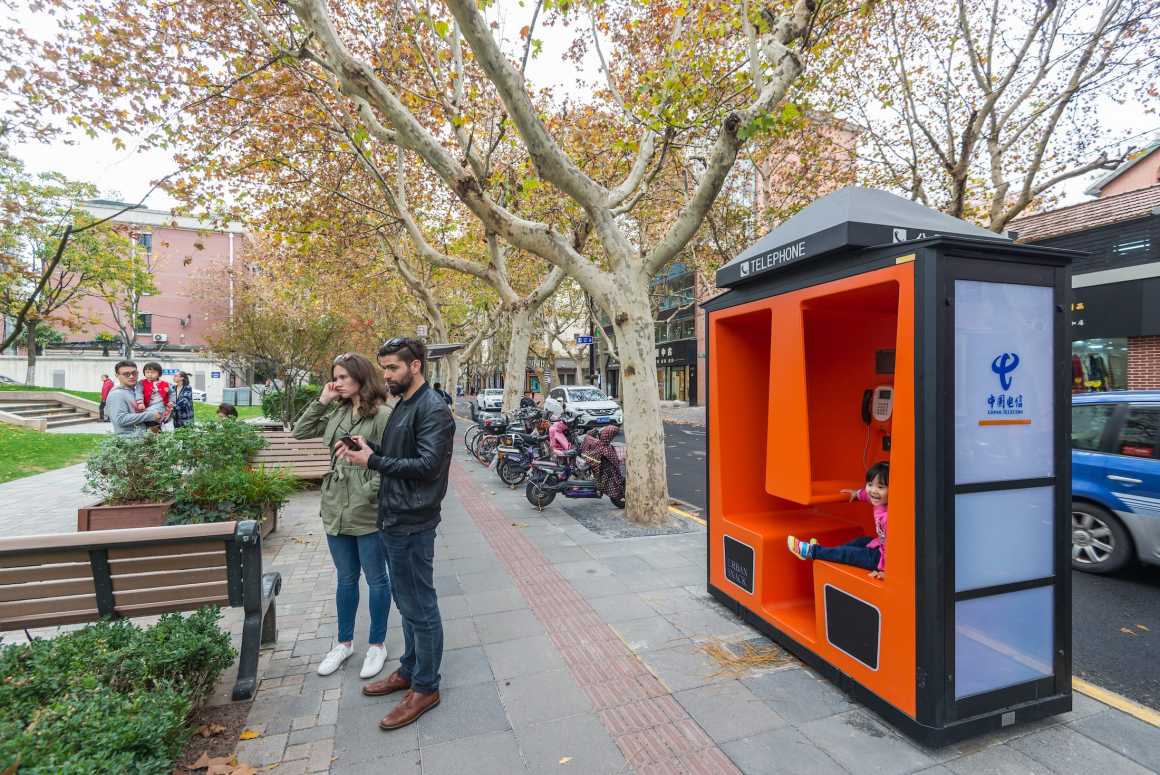

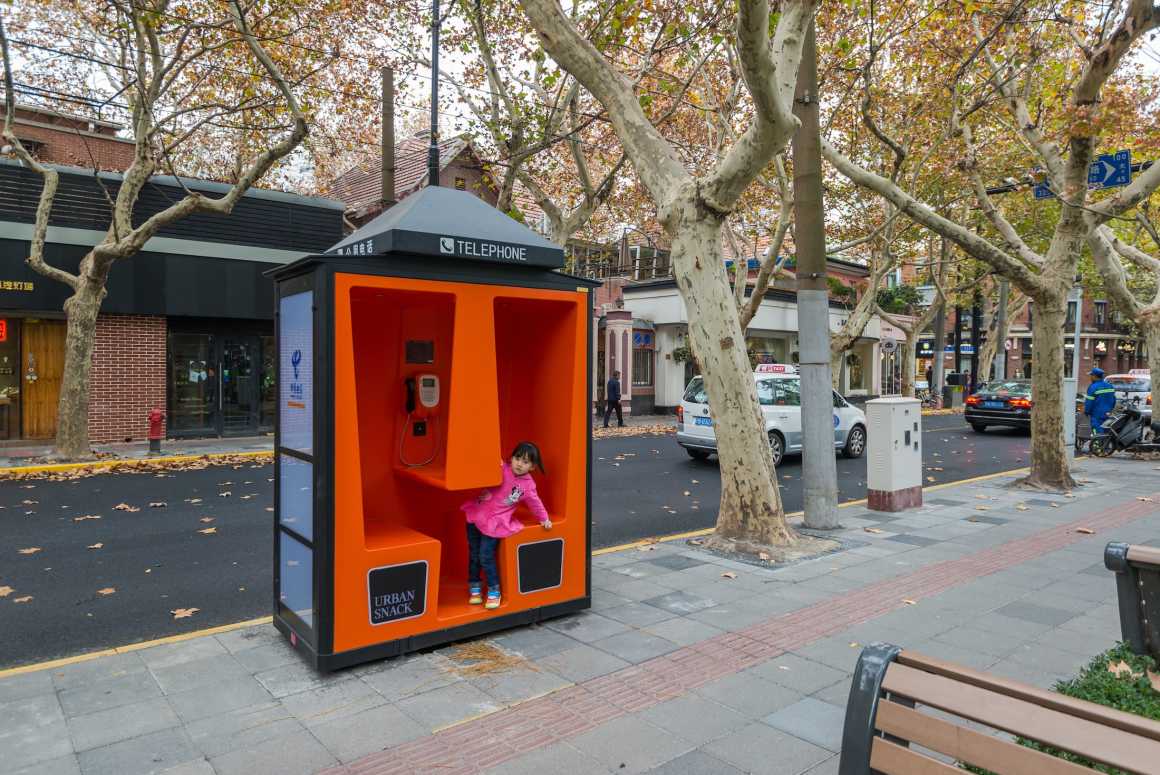
过去,电话亭不仅是用来打电话的,它还为使用它的人提供庇护,是一个屋顶、一个封闭空间,具有隐私感,这种创造空间的内在能力是设计师最感兴趣的,也是设计师最希望以当代方式复制的。与我们现在生活的时代唯一不同的是,人们的相互联系度更大,因此设计师决定更新空间的设置方式。没有封闭感和孤立感,而是向人行道开放,把电话亭转化成公共家具,与他人保持对话,这创造了一种有话题度和对比度的外观。
See, in the past, they did not only offer a phone to make calls, they also provided shelter for the person using it, a roof, an enclosed space, a sense of privacy. That intrinsic ability to generate a space is what we were mostly interested in and wanted to replicate in a contemporary way. With the only difference of the current times in which we live in we seem to be all over-inter-connected, therefore we decided to modernize the way the space is set. Instead of enclosed and isolated, we opened the booths to the pedestrian sidewalks, turning them into public furniture, stablishing a dialog with the rest of the public realm, and creating a controversial & contrasting look.
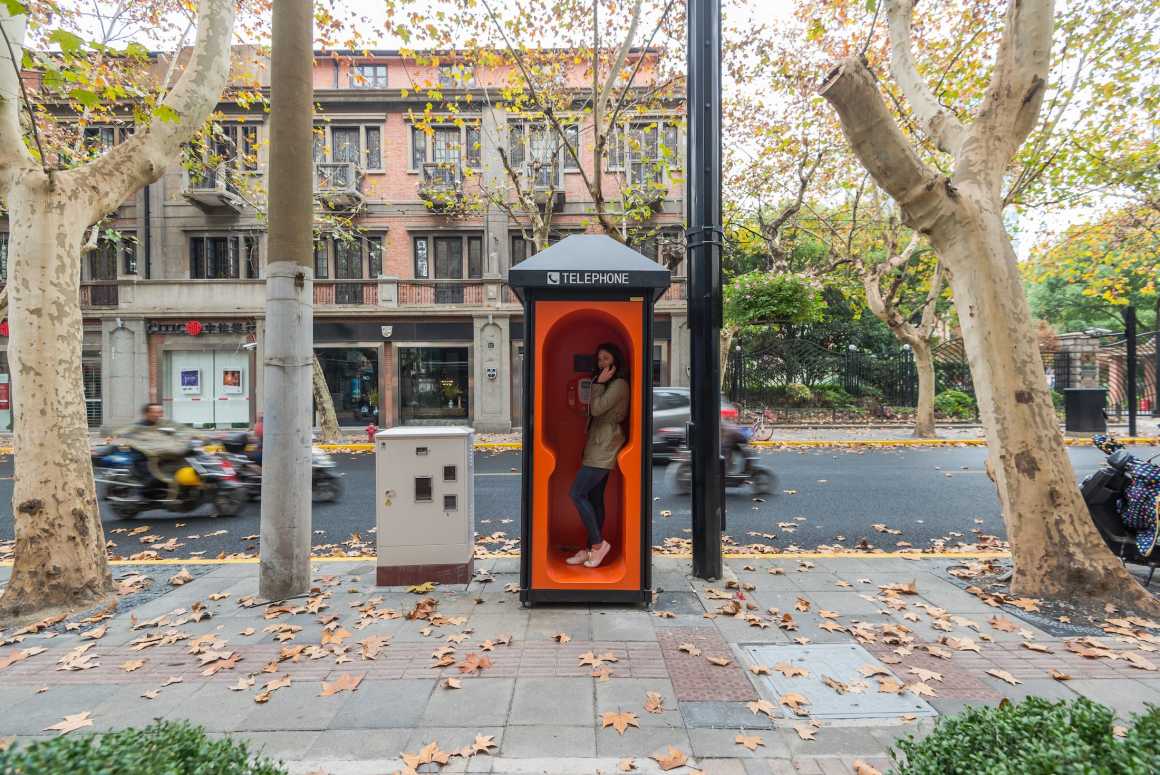
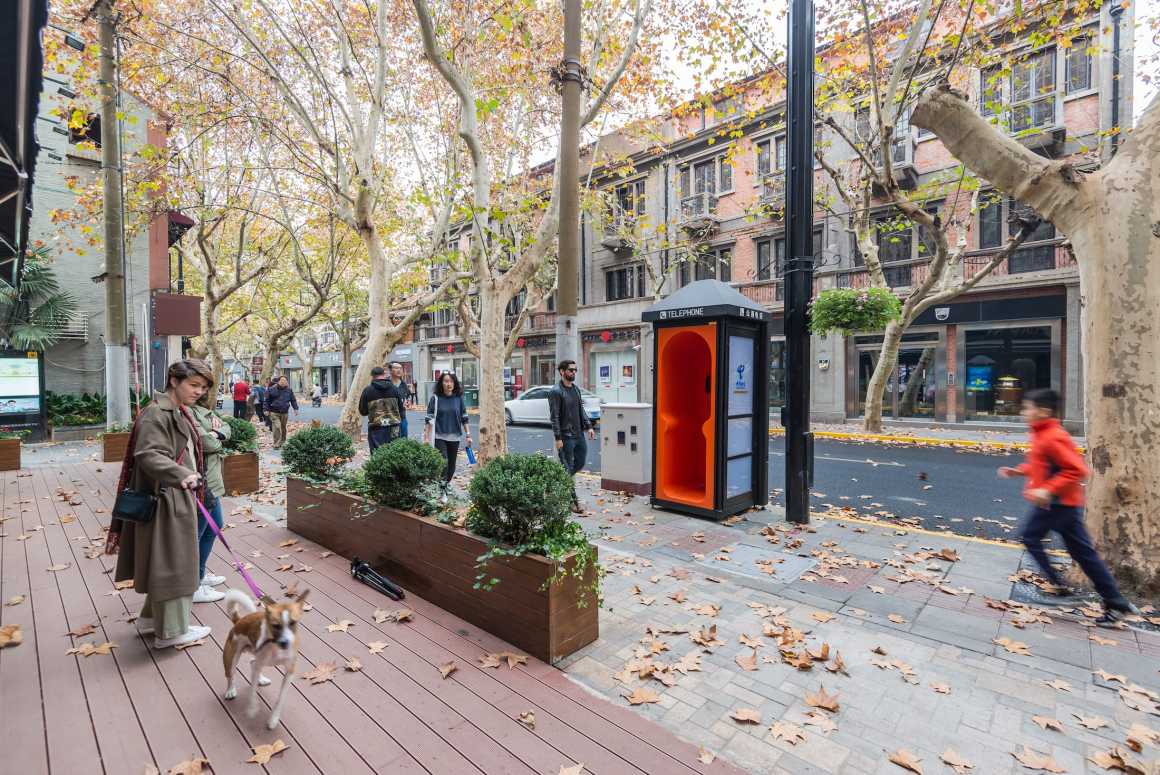
▼哑光黑色与哑光橙色形成的对比 The contrast between matt black and matt orange

设计创建了3种不同的样式,以不同的方式促进交流互动。为了实现这一目标,设计师保留了基本的旧金属结构以保持其具有过去的时代特征,只是重新把金属框架粉刷成了哑光黑色。移除面向人行道部分的框架结构,电话亭就是一个有边界的空盒子,再在它的框架内植入一个即时功能。
Our design created 3 different prototypes that facilitate interactions in different ways. To achieve that, we mainly kept the basic old metal structures, in order to keep a major resemblance to its past, only just repainted in matt black to have a more bad ass look. By removing just the front part facing the sidewalk we would end up with a limited empty box to insert an instant function within its frame.
▼电话亭灯光效果 The lighting effect


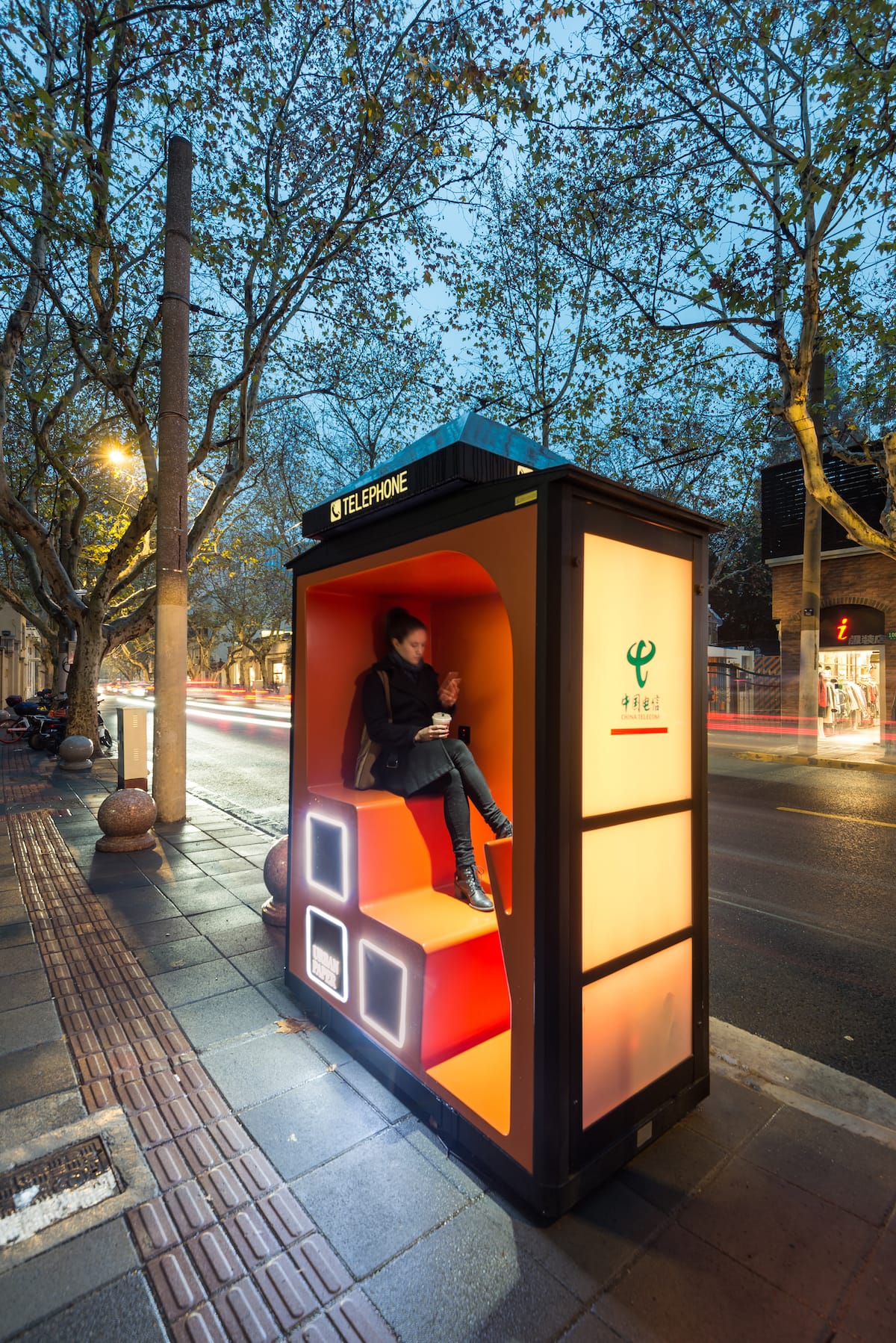
“即时功能”采用醒目的哑光橙色,在原有结构和新功能之间形成强烈的对比。展台的另外三面也进行了改造设计,在所有玻璃后面置入LED漫射灯箱,这样电话亭可以在夜间发光,成为愚园路上一个人性化的城市地标。电话亭有免费的wifi、免费USB充电插座、座位椅子、报纸架、咖啡桌、夜间阅读灯和紧急公用电话,这些都是改造后的电话亭的新功能。
The “instant functions” were done in a striking matt orange color, looking for a strong contrast of colors between the preexisting structure and the new function. The other 3 sides of the booth were also modified, introducing LED diffusive light boxes behind all their glasses, in order to make the entire booth glow at night, becoming a human scale urban landmark on Yuyuan Road. Free wifi connection, free USB charging sockets, sitting arrangement, newspaper rack, coffee table, reading lights at night and a emergency public phone are among the new features of this revamp phone booths.
▼LED漫射灯箱散发出柔和的光 LED diffusive light boxes bring us soft light
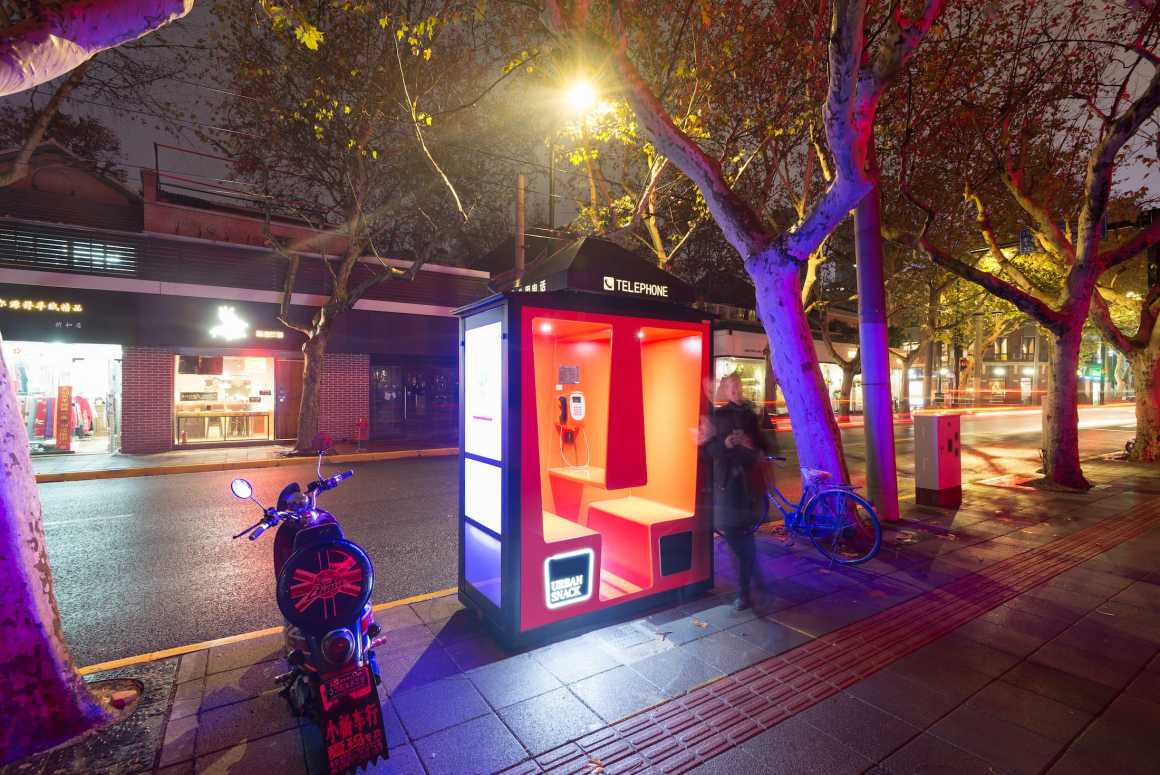
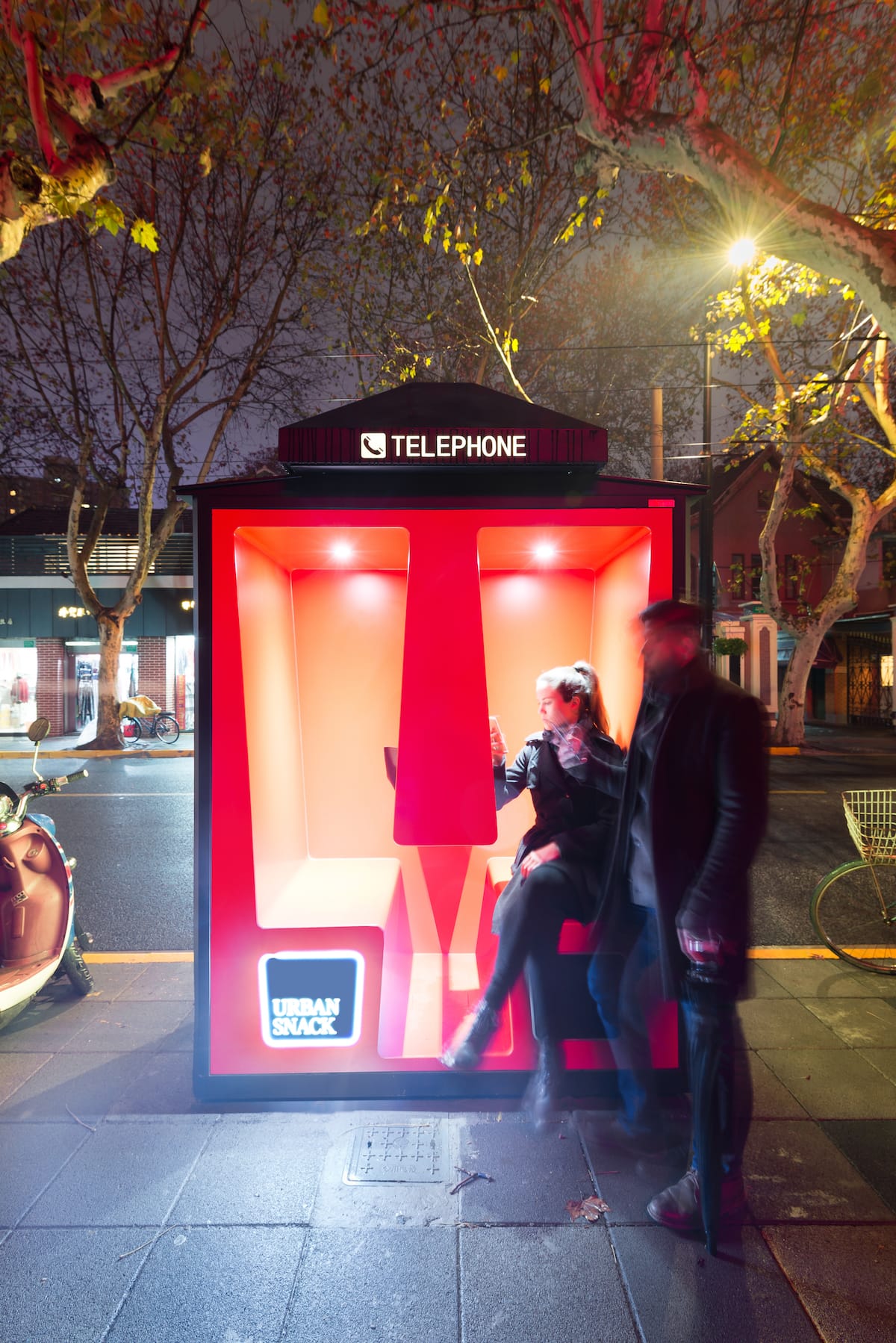
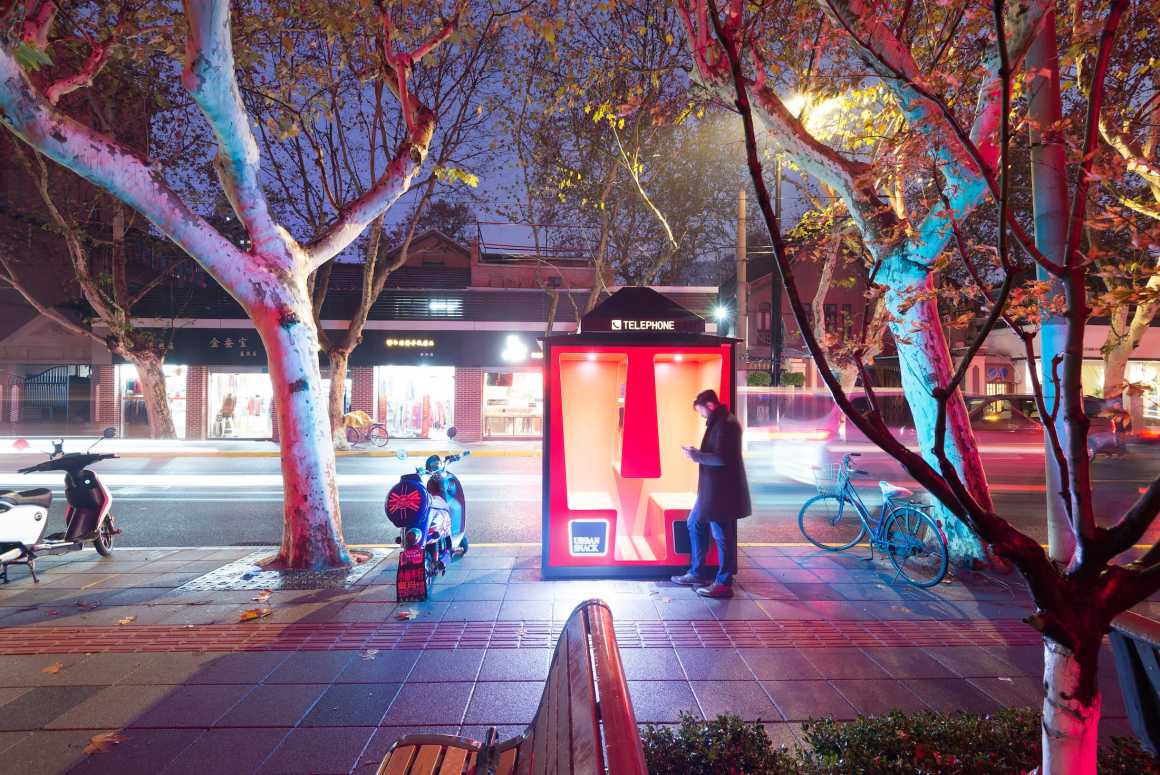
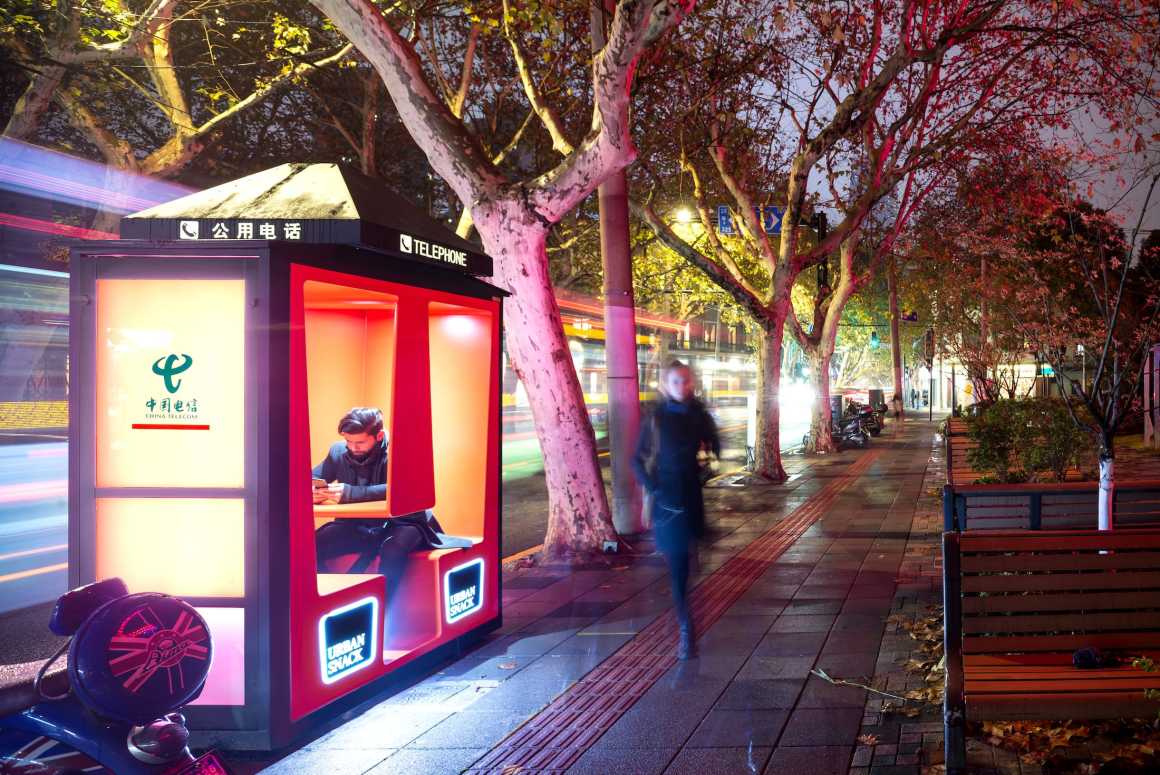
最后,这样的改造让电话亭有了一种非常酷的和现代的外观,让城市旧文物具有新的功能和新的使用可能性。这5个电话亭分布在900米长的人行道上,其功能性和开放性并存,将作为新的城市物件走进公众的视野,供上海愚园路历史街区的行人们使用。
Finally, the extreme makeover provided the phonebooths with a very cool and contemporary looking bringing back those old relics with new functions and possibilities. The 5 phonebooths units are distributed in the sidewalk along 900meters and will be permanently open to the public as a new typology of functional open urban objects to be enjoyed by the pedestrian in the historical road Yuyuan lu, Shanghai, China.
©Amey Kandalgaonkar

项目名称: 橙色电话亭
设计: 佰筑 (上海)
设计团队: Marcial Jesus和Javier Gonzalez (佰筑)
制作: Hong Yang广告(上海) + 佰筑 (上海)
照明顾问: Maciej Dudek (Squiggle Lab)
客户: MINI中国/Anomaly上海
地点: 中国上海市长宁区愚园路
完成日期: 2018年12月
摄影: Amey Kandalgaonkar
Project name: The Orange Phone Booths
Design: 100architects (Shanghai)
Design team: Marcial Jesus & Javier Gonzalez (100architects)
Production: Hong Yang Advertising (Shanghai) + 100architects (Shanghai)
Lighting Consultant: Maciej Dudek (Squiggle Lab)
Client: MINI China / Anomaly Shanghai
Location: Yuyuan Road, Changning District, Shanghai, China
Completion: December 2018
Photography: Amey Kandalgaonkar
更多 Read more about:100architects



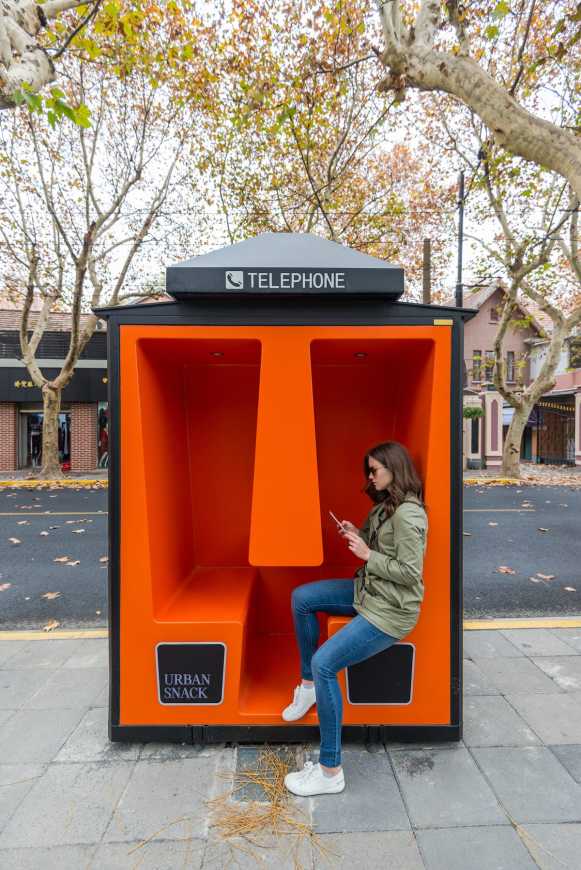




愚园路谢谢